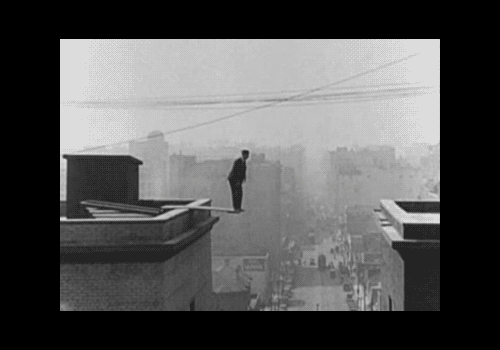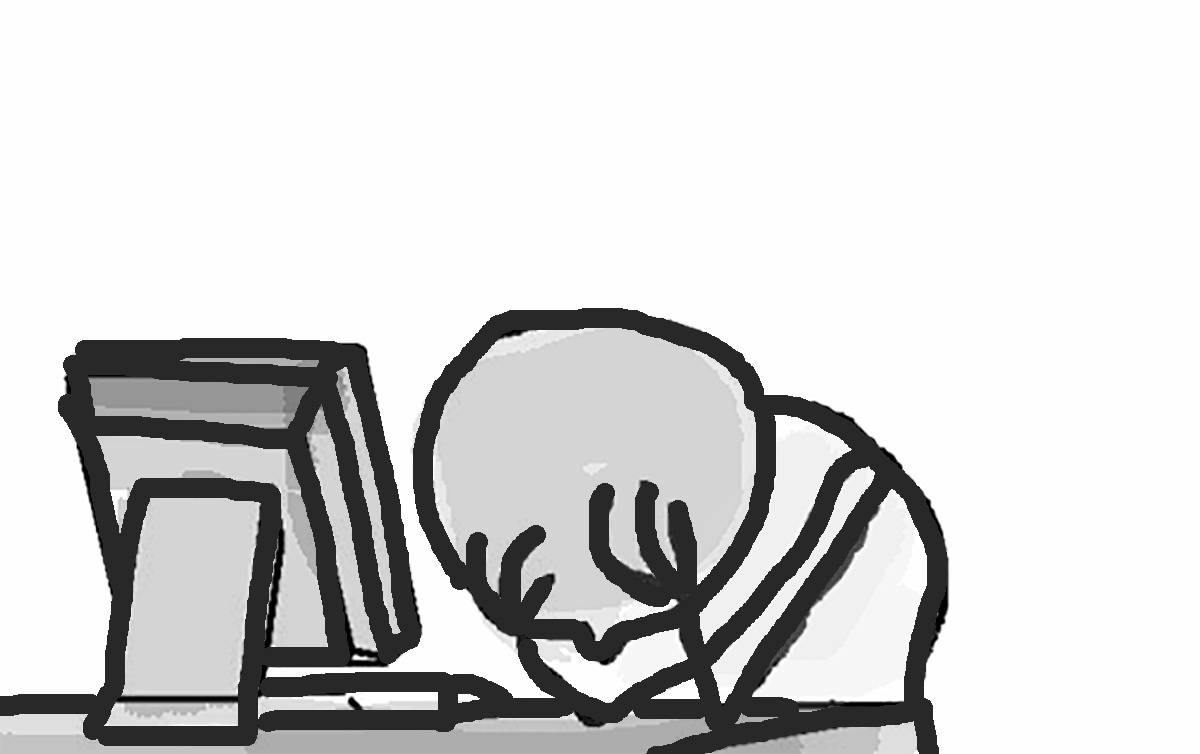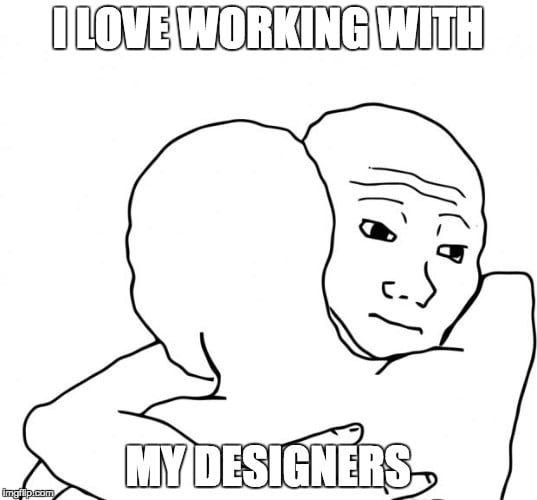How to Talk to Designers About Design: Tips for Non-Designers

My purpose here is not to explain design principles, but to help you communicate and get stuff done. I’ve been on both sides of the divide - watching clients struggle to express their needs and, like most of us, having problems expressing my own thoughts . I’ll walk you through the most common mistakes people make when giving critique or talking about design, and give some tips on how to give useful criticism.
Designing things - whether it’s software, websites or clothes for cats - doesn’t involve magic. It’s a process primarily based on rational thinking and common sense. Or at least it usually is. It is a process in which we can identify problems and give them names.
First things first: define design
We design something to give form to a function. In human talk - to solve a problem with a set of available resources.
Let’s go further and define what good design is. Good design is solving a problem so that it seems like there was never a problem in the first place. Well designed interfaces, communication processes, or objects shouldn’t require too much effort from their users. Good design isn’t obvious... until it is. Good design often makes you think: Gosh, I could have done that myself!
And yes, well-designed things are often a pleasure to look at or experience. Sometimes form precedes function. For now - let’s just focus on function, not art, and getting your stuff done by a designer.

Speaking design, speaking human
You need to communicate when working with a designer, but it often seems like you both speak different languages. There’s a good chance the designer will be your guide, so your role is reduced to answering a lot of questions. If that happens, there’s a chance you’re on the right path. It’s extremely productive for both sides to be proactive and have informed discussions.
Designing things involves a lot of psychological knowledge. We tend to simplify things and associate their looks with the qualities they have. We associate things, like user interfaces, with the products themselves. For example, applications or elevators - if a button doesn't work, the product doesn't work.
Design as problem solving may seem like something very simple, e.g. a designer creating a graphic user interface for your new application. In many industries, if someone is responsible for how it looks, there is a good chance they are also responsible for how it works. Either way, you should care about it and know how to express your thoughts.

This is you unintentionally breaking communication with your designer.
A list of common communication sins
Before we go on I just want to ask you to do something from now on.
Designers make errors. We all do. Designing is often a trial-and-error process. And before you get to that aha! moment you might have to go through a nightmare of 24 failures that precede it. Please, have a little understanding and empathy - that’s all. Now that that’s off our chest, let’s talk about things you might do wrong when you talk about a work of design.

I like it / I don’t like it
“I don’t like the color, please change it”. Let’s face it, almost all of us have used this kind of phrase when talking about a piece of design. This is a sin.
The single worst kind of feedback you can give is telling someone you like or dislike their work. By saying this, you give a judgement, instead of arguments that can be assessed. It doesn’t communicate whether the problem that needs solving has been addressed, but rather whether or not your own preferences have been satisfied. This puts your designer in the shoes of a mind reader, where their guessing skills are more important than their craft skills. Please never do this again.
"I don’t think someone would do [something]"
We’re terrible at predicting people's’ behaviour. You can read a bunch of brilliant articles on the subject, e.g. this one from UX Myths. What’s more - we’re even worse at predicting our own behaviour! Here are more sources to prove this!
From now on, whenever you hear someone using this kind of argument, hit them with a paper airplane. Even if they’re your boss.

Guessing and telling the designers how to do their job
Can you move X a little bit Y and send me a new picture - if you’ve never done this, then feel free to cast the first stone. It’s the fastest way to ruin your relationship with a designer. Period.
Without expressing your needs, you force the designer to read your mind. If a designer is good at guessing or mind-reading, your partnership may go smoothly and you’ll get the work done. But you’ll never know whether everything went smoothly because the designer understood and solved your problem, or because they just got lucky and their work lined up with your preferences.Also, telling someone how to do their job is extremely annoying (thanks, Captain Obvious!).
Other factors influencing communication with designers
Sometimes you might be afraid to give honest, critical, yet productive feedback. This can happen in a number of situations:
- You’re short on time or budget.
Simply tell your designer if that’s the case. Time and money are the main constraints for a designer. Be frank and they will figure out a solution that fits your timeframe or budget better. You won’t regret it.
- You’ve had enough of the designer.
Things can escalate quickly when communication breaks down. Try to smooth things out before it’s too late. Be aware of when and why it happens.
- You are asked to critique the work of a colleague, a highly paid rockstar specialist. You and your boss have different opinions on things.
The ability to speak and critique freely is key. Understanding this is the foundation of proper communication with a designer. This is a pretty extensive issue, but there are great resources available on how to handle stakeholders or so-called HIPPOS. This is the kind of situation where you can demonstrate your new communication skills.
- You feel forced to criticise.
My boss doesn’t like this / thinks it would be better if… Know the reasoning behind your superior’s thinking. You can do this by simply asking questions.

Sometimes, the distance between you and a designer becomes hard to bridge.
3 tips for better communication
-
Ask simple questions to get to the core of the problem. The best solution may seem obvious when it’s discovered, but the path there is often paved with trivial questions you may fail to ask yourself or a designer.
-
Ask questions. If your designer doesn’t know why something they designed works or looks the way it does, there’s a good chance they don’t know what they’re doing at all. You are wasting your time and losing your money. Always expect an informative answer from your designer.
-
Ask more questions. There is no such thing as a stupid question. Stupid questions can be of great importance, but they’re useless if left unasked. Whatever gets you closer to a proper solution is good for you and your designer - don’t hesitate to ask, ask, ask!
-
Respond to your designer’s questions. The faster, the better.

We've all been there.
How to talk and give good feedback about design?
This simple list of questions is just a starting point.
- Why?
- What problem does it solve?
- Does it solve my problem?
- It does/doesn’t, because…
It’s easy to overload a design with redundant features and, at the same time, it’s hard to know what to leave out. Just ask these basic questions and trust me, you’ll be surprised by how many doubts you dispel.
- Does it serve my purpose?
- If not, why not?
- It doesn’t, because…
I promised to help you get your stuff done. By asking yourself this set of questions, you will open your mind to a set of adjectives and wordings that will take your critique skills to a new level.
- Does it serve its purpose for a majority of usage cases?
- It doesn’t, because...
A designer should have asked themselves this question already, but better safe than sorry.
- Is it easy to use?
- It isn’t, because...
There are situations when you are the best informed person in a project. Being an expert puts you in a position where the designer needs your knowledge and experience.
- Does this solution create other problems?
- It does, because...
Often you and your team may hurry to implement the first decent solution that fulfils your needs. This is dangerous because, by working this way, you can create new problems that would not otherwise have occurred! Once you become aware of the potential drawbacks of your solutions, you can avoid this pitfall.
The designer might sometimes ask for your opinion or if you like some stuff. There’s a good reason for this. They may want to get to know your character or preferences, and will try to get something to start working from. The designer can let you expand on what you need in a friendly, familiar language. But be wary if these are the only kind of questions you are asked.

Sometimes your input can go way further than guiding or asking questions. Any kind of design testing can be a great help to your designers. Be active and be a partner!
If there’s one thing I want you to take away from this article, it’s to
communicate - not guess.
If you're more into development than design but want to understand the designer's point of view on your work - check out this developer's guide to Photoshop and make your work with PSD files quicker and easier!


